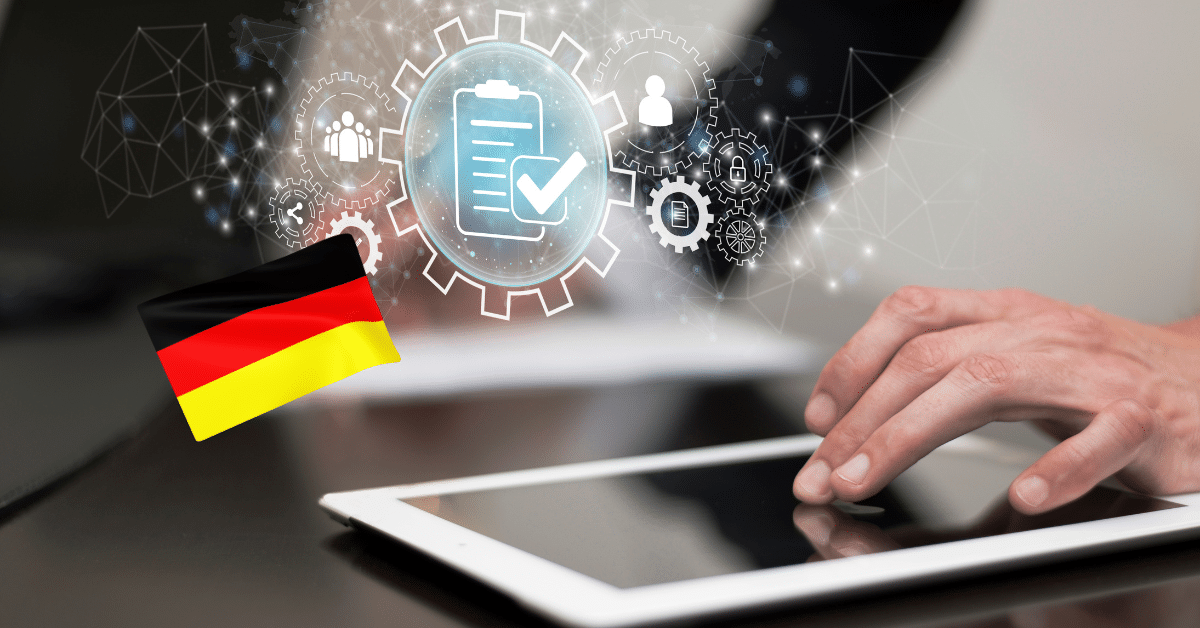In today’s digital age, electronic invoicing (e-invoicing) has become an essential component of modern business operations, revolutionizing the way organizations manage their invoicing processes. But what exactly is e-invoicing, and how can you efficiently process e-invoices within JD Edwards?
Electronic invoicing or e-invoicing, initially introduced to streamline business-to-government transactions, has gained worldwide momentum due to its many benefits. Many federal governments are now mandating e-invoicing to combat the VAT gap, increase financial transparency and promote sustainable financial development. Beyond regulatory compliance, e-invoicing offers significant advantages to companies, including cost savings, heightened efficiency, and faster processing times. Before delving into its benefits, let’s first define what is e-invoicing.
What is electronic invoicing
Electronic invoicing involves the digital exchange of invoice documents between trading partners – sellers (suppliers) and buyers (customers). Businesses transmit, receive and process e-invoices electronically in a structured data format, such as XML, which facilitates automated processing in ERP systems like JD Edwards. This electronic exchange streamlines the invoicing process, making it touchless and enhancing accuracy and efficiency in financial transactions between businesses.
What are the benefits of electronic invoicing
E-invoicing is rapidly gaining popularity, thanks to its wide-ranging benefits.
Reduced Processing Costs and Time
E-invoicing eliminates the need for paper-based invoices and manual handling. The touchless processing streamlines the entire invoicing workflow, saving time and costs in generating, sending, receiving, and reconciling invoices.
Improved Supplier Relationship
Facilitated transmission speeds up the processing and dispatch of electronic invoices, resulting in quicker payments and ultimately enhancing supplier satisfaction.
Fraud Detection and Prevention
With e-invoicing, the seller automatically sends the invoice to the buyer, minimizing the risk of fraudulent activities that may occur with manual intervention.
Improved Cash Flow Management
Electronic invoicing provides businesses with real-time visibility and control over their cash flow. Through tracking invoice statuses and payment schedules, businesses can more efficiently manage their finances.
Data Insights and Analytics
E-invoicing generates rich data sets that offer valuable insights into financial performance, vendor relationships, and market trends. Leveraging this data enables businesses to make informed decisions and drive growth.
Compliance and Audit Readiness
Built-in compliance features in e-invoicing ensure businesses remain compliant with tax regulations, industry standards, and audit requirements.
Faster Payment and No Late Payment Penalties
Unlike traditional paper-based invoicing, electronic invoices can be generated, transmitted, and received electronically within minutes or hours. This rapid exchange expedites payment collection, reducing the time between invoicing and receipt of payment.
Electronic invoicing: Government initiatives and PEPPOL
In the electronic invoicing scene, there are two main initiatives that are being predominantly globally: government initiatives and PEPPOL Network.
Government initiatives
Government initiatives for e-invoicing fall into two main categories: the clearance model and the post-audit model. However, it doesn’t stop there; the European Union and other federal governments are also rolling out their own e-invoicing mandates. Keep on reading to explore them in the following sections.
Clearance Model
The Clearance Model is a method utilized for validating and approving electronic invoices. In this model, businesses can only send and validate e-invoices after receiving approval from the corresponding tax authority. Invoices are initially registered in the government system, where they undergo processing, validation, and approval before being transmitted to the recipient. The Clearance Model is commonly employed in countries where governments seek greater control over invoice exchanges and taxation. This model is been currently used in most Latin America countries – Mexico, Peru, Chile, Brazil, Argentina – and Southern European countries – Italy, Spain, Portugal and Turkey.
Post-Audit Model
The post-audit model involves exchanging invoices without direct involvement from government and tax authorities. Under this model, tax authorities review invoices after issuance. Consequently, businesses must ensure that invoices are authentic, legible, and properly accounted for, and they must keep tax authorities informed through periodic reporting. Various methods such as digital signatures, EDI, and business controls ensure authentication and data integrity.
Additionally, businesses must maintain a log of invoices for compliance as tax authorities may conduct random audits at intervals following transactions. This model is currently employed in most European countries.
ViDa (VAT in the Digital Age)
In addition to the previously mentioned initiatives, the European Union is currently working on ViDA initiative (VAT in the digital age). This initiative aims to ensure the correct collection of VAT for businesses selling goods or services online to customers within the EU. Although EU Finance Ministers did not reach a final agreement on the 3-pillar reforms, negotiations will restart in the first half of 2024, with the aim of launching the initiative between 2025 and 20230. Another obstacle to the implementation of this initiative is the fact that businesses and tax authorities in the EU are not prepared for tax harmonization plans. For example, Poland recently announced that their National E-Invoicing System (KSeF) presents critical errors.
Other Federal Government Initiatives
Federal governments are also implementing their own e-invoicing government initiatives. The French tax authority, DGFiP is setting a CTC mandate for e-invoicing, which is set to start on 1st September 2026. Spain is also moving forward in its effort to digitalize invoicing. The Spanish government has recently finalized the Ordinance regulating B2B e-invoicing within the country. The new regulation excludes B2B transactions involving recipients who are not tax residents or are not permanently established in Spain. Germany is issuing a mandate to make B2B e-invoicing mandatory, that will force all companies to be able to receive e-invoices starting from January 2025.
In the USA, the Business Payment Coalition has launched a market pilot. This initiative aims at designing, building and testing a secure network with a standardized delivery framework through certified service providers. The Australian government recently updated PEPPOL Pint, which was initially introduced in 2019, aiming to enhance accessibility to electronic invoice processing for businesses of all sizes.
PEPPOL Network
PEPPOL, short for Pan-European Public Procurement Online, is a set of directives designed to drive the digitalization of transactions in both B2G (Business-to-Government) and B2B (Business-to-Business) sectors. Serving as a highly secure international network, PEPPOL facilitates electronic document exchange, including e-invoices, among all registered participants. PEPPOL establishes a common set of technical specifications and standards to ensure seamless communication and interoperability across the network.
Through the PEPPOL network, organisations and governments can transmit invoices in UBL (Universal Business Language) format, the most commonly used e-invoicing standard. Besides e-invoice exchange, the PEPPOL standard facilitates the exchange of electronic orders, order confirmations, product catalogues, shipping documents, and more.
While PEPPOL is widely adopted across Europe, its popularity is also increasing in regions such as Australia, New Zealand, Singapore, Japan, and the United States. Organizations in these areas are leveraging PEPPOL to simplify cross-border commerce and enhance operational efficiency.
E-Invoicing in JD Edwards: A comparison with traditional invoice processing
E-invoices differ from traditional invoices not only in format but also in the method of transmission to the receiver. In the traditional invoicing process, suppliers create invoices and send them to buyers via email in various formats such as PDF or image. Upon receipt, buyers manually enter invoice details into their JD Edwards systems, or this process may be automated if an AP automation is in place.
On the other hand, e-invoices are transmitted over secured networks, such as the PEPPOL Network, or through government and tax authorities networks, in a predetermined and structured format. Upon receipt, the system automatically processes e-invoices, by extracting and recognising all invoice details. As a result, the touchless process eliminates the intermediate steps typically involved in traditional invoice processing.
Receiving and processing e-invoices in JD Edwards
Managing e-invoices in JD Edwards is seamless with SCANMAN. Our software can automatically process invoices received in all kinds of XML and EDI formats, commonly used across the globe. With a 99.99% first match rate, the system efficiently recognizes invoice details thanks to their pre-formatted structure.
In addition to e-invoices in XML formats, SCANMAN can process invoices subject to the clearance model, a feature implemented for Italy, Turkey, and Latin America. This functionality is particularly valuable for companies with subsidiaries in these regions or those receiving invoices from suppliers active there. Finally, SCANMAN connects to the PEPPOL network via an access point, enabling the processing of all invoices received through the PEPPOL network.
E-invoicing and beyond…
Electronic invoicing will become increasingly important in the invoicing spectrum. In this article, we have discussed the key features, benefits, and initiatives gaining traction worldwide. As the ability to process invoices becomes crucial, partnering with a reliable service provider for receiving and processing e-invoices is essential. Trust SCANMAN as your dedicated partner in this process, to enhance business growth and maintain your competitive edge. Request a free demo, and see the SCANMAN solution in action.




